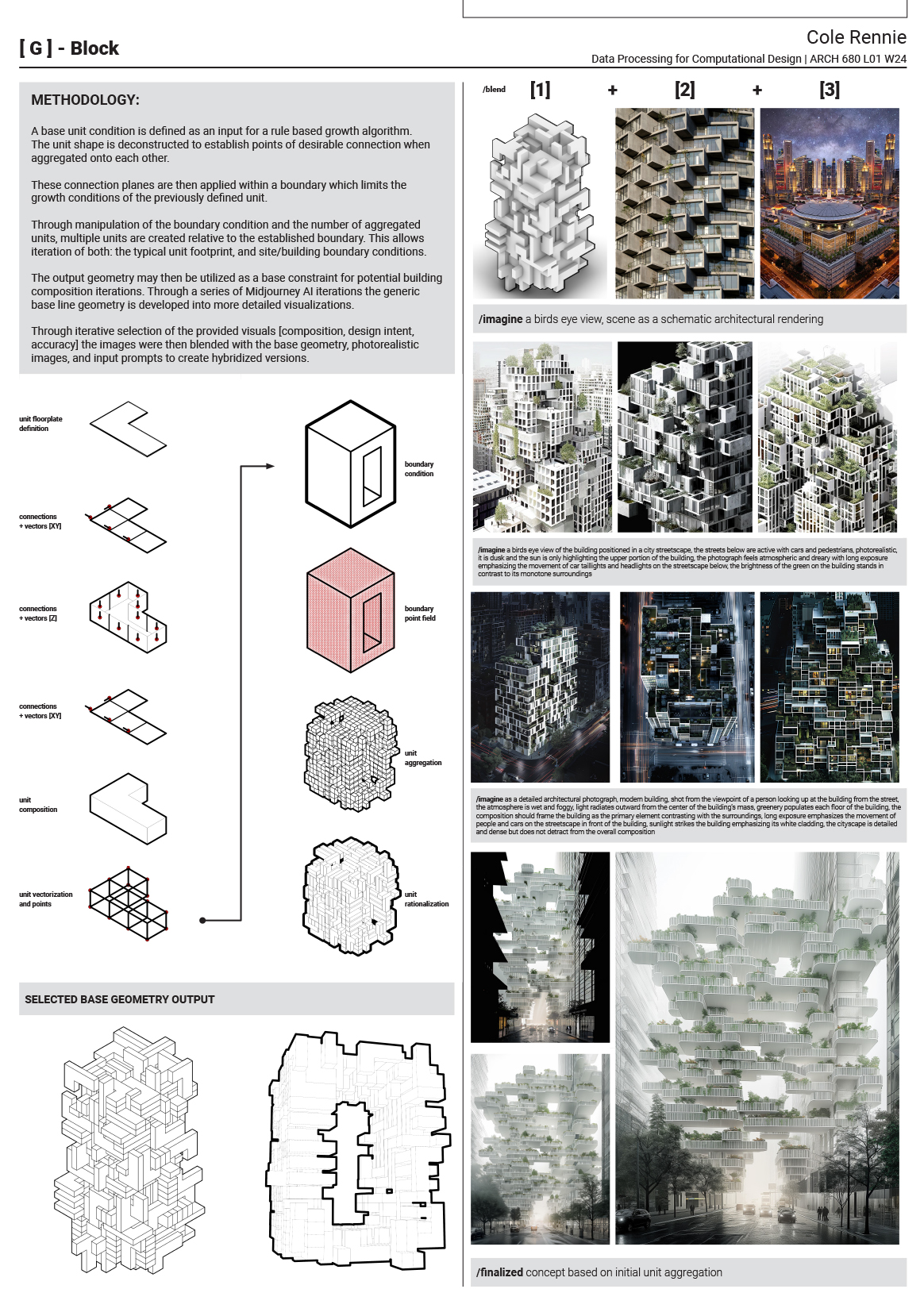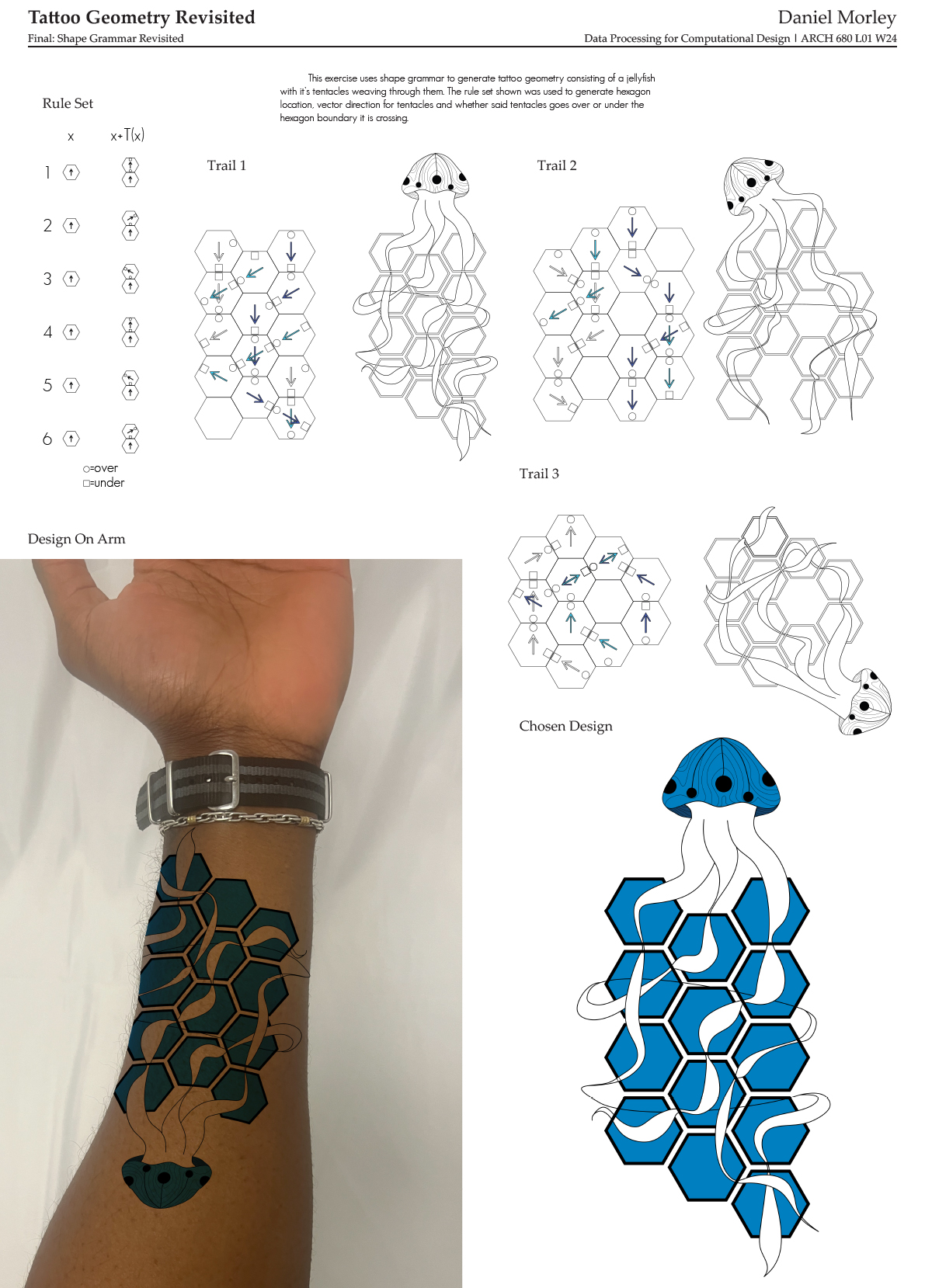Data Processing for Computational Design, W24
This course is designed to equip students with a solid foundation in computational representation, spanning a wide range of data types, formats, and structures. This course delves into various algorithmic approaches, starting from foundational algorithms and progressing to classical and learning-based Artificial Intelligence (AI) techniques. In today's design landscape, AI has emerged as a pivotal element. This course aims to facilitate a deep understanding of the fundamental data underpinning computation, which is integral to comprehending the evolving landscape of AI technology. It provides an insightful overview of the evolutionary trajectory of AI technology and its seamless integration within design disciplines, tracing its transformative journey over the past six decades.

[G]-Block, Cole Rennie, 2024
This course begins with the development and data of early computer. We explore what a computer is, how it has evolved, and how modern computers are operated and structured. In the course of the development of the computer, we examine efforts to introduce computers into design, understanding the early stages of computational design. Moreover, this course expands the topic to the development history of AI and its relationship with design. We explore what AI is, how it came about, which moments emerged as key in the development history of AI, and envision how AI might be utilized in the design field in the future. Based on the developmental history of computers and AI, this course covers four computer systems that have led innovative changes in design: the rule-based system, agent-based system, parametric system, and learning-based system. Students will understand how each system works and, by physically implementing simple examples without using a computer, comprehend the composition and characteristics of the data in each system. Based on this, they will implement and utilize each system for 3D modeling and apply it to a design project.

Tattoo Grammar, Daniel Morley, 2024
Through a combination of engaging lectures, readings, discussions, interactive hands-on exercises, and projects, students will develop a comprehensive grasp of data comprehension. By the end of the course, students will possess the skills and knowledge required to harness the power of data processing, enabling them to drive innovative and effective design solutions in the context of modern computational design practices.